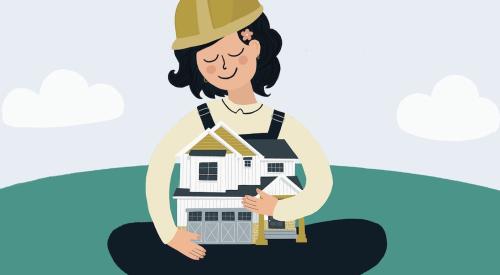|
Heather McCune's Editorial Archives
|
My oldest daughter is 10 this year. It is an interesting age and, if truth be told, a challenging one for both of us. Her sights are set on being everything she couldn’t be as a child -- independent, in charge and free to explore the world in her way. My job is to help her do all those things, but at the same time teach her that with all these new freedoms come new responsibilities. If you’ve had a child this age, you know how complicated -- and how loud -- a process this can be.
In living this transformation day to day in my own home with my own child, I’ve become more attuned to the signs that mark the journey from dependence to independence. Some are small steps, others are giant leaps. Some she initiates, others are forced upon her. No matter the size or the source of change, each requires that she practice that most adult-like behavior -- learning what she thinks and believes and thus, how she will act in the wider world.
I’ve learned something in watching my daughter journey from child to adolescent -- this isn’t something that only happens to children. Organizations, and even ideas and the people united around them experience the same process -- or at least they better if they are to survive and effect the growth or change they came together for in the first place.
This became obvious to me as I proofed the pages of this issue. First there is the story of the 11 largest publicly traded home builders who are, to borrow a phrase, mad as hell and not going to take it any more. One by one these CEOs have tried telling their story of soaring sales and record profits to the Wall Street money managers, and one by one they have been ignored. Stock valuations remained at absurdly low levels, while the rhetoric reached record decibels.
They’ve opted for a new approach. Together they are funding an advertising campaign that tells their story to a broader audience -- readers of the Wall Street Journal and Barron’s. It would have been easy to stay in the "I, me, mine campaigns" as one after another of these CEOs sang their same song. But the refrain grew too tiresome and stock prices remained too low. Instead, each company looked beyond its own corporate borders and recognized the value of taking one message to a broader audience. The health of the sector became paramount to the concerns of these individual companies and competitors.
I saw again the signs of growth, this time of an idea, as I reviewed the Upfront article about the efforts to create a national standard for green building in residential construction. Launched under the auspices of the U. S. Green Building Council, an amazing group of 20-plus individuals came together in early August to begin this year-long process. For three days four teams worked to define the basic principles of green building in the following areas: materials, indoor environmental quality (IEQ), energy efficiency and site design.
I was honored to be a part of this meeting. Truly from daybreak until day’s end, I moved from one committee session to another and watched the dedication, determination and belief of those involved in creating LEED residential. Their goal is ambitious -- to transform the market so that green building becomes the defacto standard.
There were moments between Friday and Monday when this process made me more than a bit nervous. While I never doubted the goal, I was worried about the means. But the more I watched the committees work, the more confident I became. Learning and coaching about the realities of the marketplace occurred everywhere. Builders educated the building scientists and vice versa, and throughout the meeting there was a lot more learning than there was dogma.
As I’m trying to do with my daughter, builders are coming together to create their own safe environment where they can question the world around them -- the way it has always been -- and create their own new answers to the industry’s most pressing problems. It will, at times, be a loud process, but what a joyful noise.












